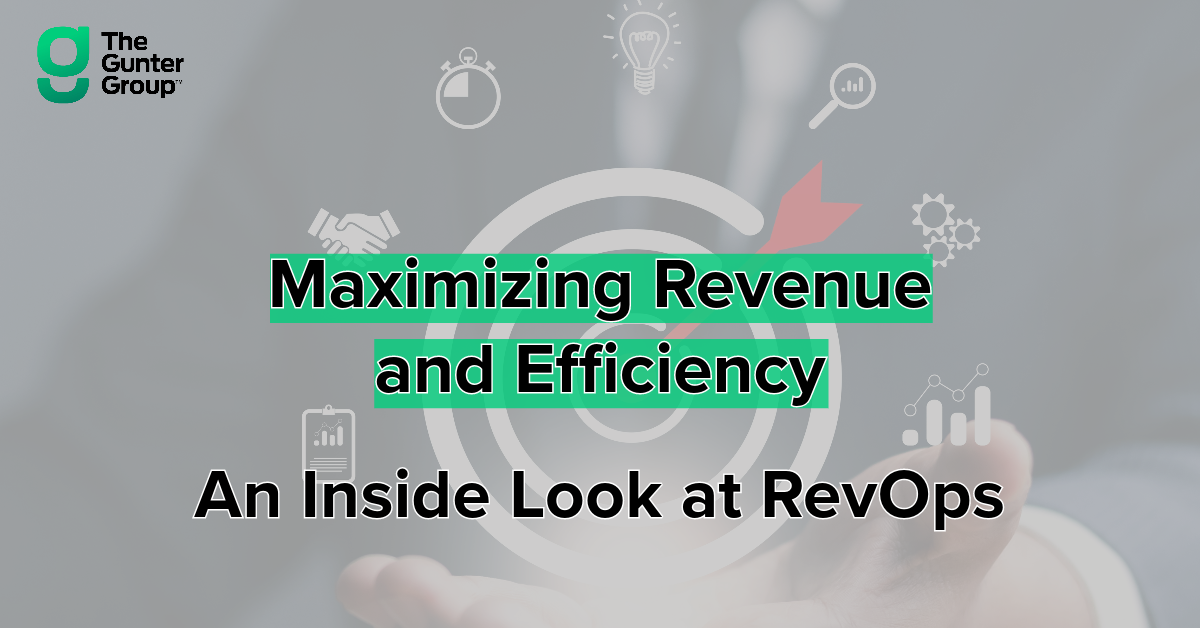In the fast-paced and ever-evolving digital landscape, businesses must embrace change and adapt to stay ahead of the competition. Digital transformation has emerged as a crucial catalyst for success, enabling organizations to optimize processes, enhance customer experiences, and drive innovation. As a resource to support industry professionals, TGG has created a detailed guide to a successful digital transformation that you can download HERE. In the upcoming series of articles, we will be focusing on one aspect of the digital transformation process that often gets overlooked yet is essential for business existence and success: Revenue Operations (RevOps).
The Role of Revenue Operations in Digital Transformation:
RevOps can be defined at a high level as a strategic approach that involves aligning and optimizing all revenue-generating functions within an organization.
Traditionally, businesses have operated in silos, with each department focused on its own objectives, leading to fragmented workflows and inefficient processes. Revenue Operations seeks to bridge these gaps and align various functions like marketing, sales, and customer success to work in harmony towards a common goal – generating revenue.
Digital transformation accelerates the need for RevOps, as businesses must adapt to the changing customer behavior and preferences in the digital realm. Embracing data-driven strategies, automation, and analytics allows companies to gain insights into their operations, improve overall efficiency and ultimately support revenue growth.
The Goals of Revenue Operations
In our experiences supporting client partners through impactful Digital Transformations and RevOps initiatives, successful RevOps have seven main goals. Each of these goals plays a vital role in supporting strategic outcomes.
1. Enhancing Customer Experience: In the digital era, customer experience is king. RevOps aims to unify customer touchpoints and interactions across different departments, ensuring a seamless and personalized experience at every stage of the buyer’s journey. By understanding customer preferences and pain points through data analysis, companies can offer relevant solutions, leading to higher customer satisfaction and loyalty.
2. Maximizing Revenue Growth: At its core, RevOps aims to drive revenue growth. By optimizing processes, reducing inefficiencies, and capitalizing on cross-selling and upselling opportunities, businesses can maximize their revenue potential. The focus shifts from isolated departmental goals to a unified approach, where everyone works together towards generating revenue.
3. Streamlining Sales Processes: Digital transformation brings forth new tools and technologies that can optimize sales processes. From lead generation and nurturing to closing deals, RevOps streamlines the sales journey, eliminating redundancies and improving overall efficiency. Automated workflows, AI-powered sales analytics, and customer relationship management (CRM) software enable sales teams to work smarter and close deals faster.
4. Data-Driven Decision Making: Revenue Operations relies heavily on data analytics to drive insights and decision-making. By centralizing data from different departments, businesses gain a comprehensive understanding of their performance and can identify areas for improvement. Data-driven decision making enables companies to be agile, adaptable, and responsive to market changes.
5. Achieving Sales and Marketing Alignment: Misalignment between sales and marketing can lead to lost opportunities and wasted resources. RevOps aligns the objectives, strategies, and tactics of these two critical functions. By fostering collaboration and communication, RevOps ensures that marketing efforts lead to quality leads that are effectively converted by the sales team.
6. Increasing Scalability: Scalability is a key aspect of digital transformation. As businesses grow and evolve, they must be able to handle increasing demands without sacrificing quality. Revenue Operations establishes scalable processes that can adapt to changing market conditions and support the organization’s growth trajectory.
7. Cultivating a Customer-Centric Culture: In a digitally transformed landscape, customer-centricity is a non-negotiable aspect of success. RevOps fosters a culture that revolves around the customer, where every decision and action is taken with the customer’s needs in mind. This approach creates a positive brand image and builds long-lasting customer relationships.
Digital transformation is not just about adopting new technologies; it is a holistic shift that requires an organization-wide commitment to change and improvement. Revenue Operations plays a pivotal role in this transformational journey by aligning sales, marketing, and customer success, and enhancing customer experiences. The main goals of RevOps revolve around improving efficiency, driving revenue growth, and creating a customer-centric culture. By integrating Revenue Operations into their digital transformation strategy, businesses can unlock the full potential of their operations and position themselves for sustained success in the digital age.
In the following series of articles we will provide you with strategic and applicable information that you can use in your organization. Stay tuned as we explore the Revenue Operations topic in greater detail and dive into RevOps components, implementation approach, key performance metrics, enablement and more. We are looking forward to embarking with you on this journey.


